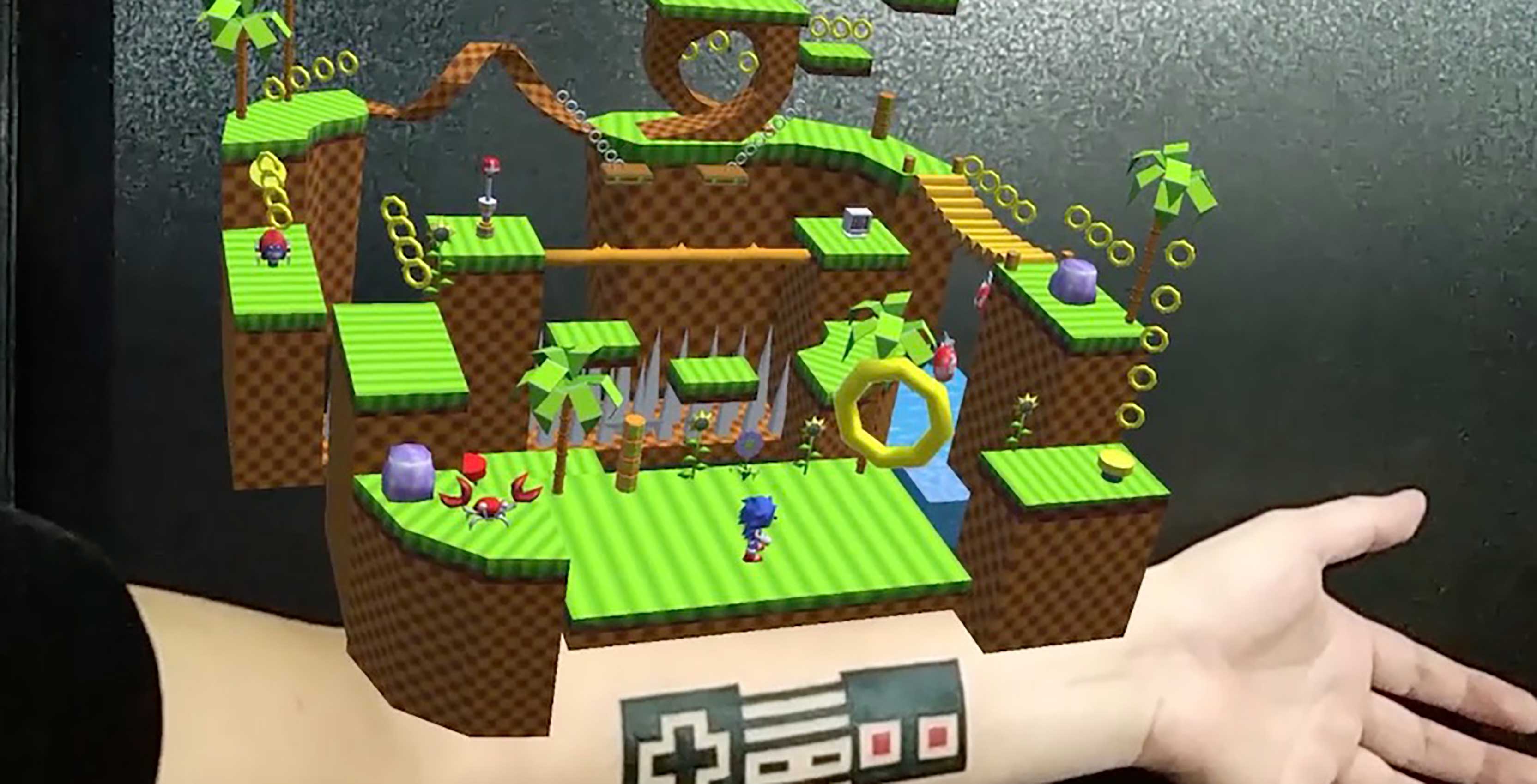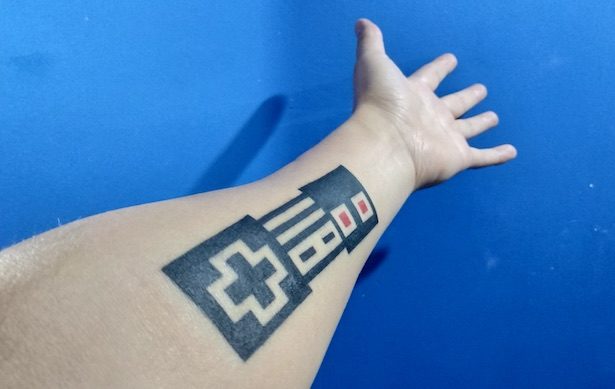
Thanks to the prevalence of mobile devices, we’re now able to play thousands of games wherever we go.
But what if you didn’t even need your phone or tablet screen to do this? Some people, like developer Olo Sabandija, imagine a world where games can be played through augmented reality-powered tattoos.
In this case, he’s used popular open-source programming suite Unity to develop a semi-playable AR version of the 1991 classic platformer Sonic the Hedgehog. Speaking to Nerdist, Sabandija says he used to be a hardcore fan of Sega, which led him to pursue this project.
When watching the above video, though, you may notice that the tattoo is in the shape of an NES controller, rather than the gamepad from the Sega Genesis, the system that Sonic the Hedgehog debuted on. While not historically accurate, the NES’ shape — which consists of many straight lines — is the only way Sabandija says could get it up and running on his phone’s AR app.
With it, the NES tattoo can serve as a marker for the app to recognize and, in turn, run the AR Sonic simulation. By pressing the NES controller’s buttons on his arm, he’s able to reset the AR simulation, change the stage or even make Sonic jump. However, he hasn’t been able to get Sonic to run at the moment.
Impressively, he says this work is the result of teaching himself how to use Unity over the course of a few weeks. With more experience, he says he’ll be able to make games where you can move side to side like Arkanoid or Space Invaders.
More on Sabandija’s work can be found here.
Verdict: Not sticky… yet
Given that Sonic is known for starring in fast-moving games (and is arguably a bit imprecise and hard to control even with an actual gamepad), a tattoo is by no means going to be an ideal (or even feasible) playing experience. Further, having to get an actual tattoo inked onto your skin isn’t exactly a simple way to get a game up and running (although Sabandija says one tattoo can be used as a marker for any type of AR experience).
Still, Sabandija’s work here is so intriguing because of what it represents on a grander level. Seeing developers use technology to find innovative new ways to deliver entertainment is always fascinating. It’s easy to imagine how more experienced devs could discover other ways to recreate classic games without permanent tattoos.
Hopefully, people will be able to get this working with better games than Sonic.
Note: This post is part of an ongoing series titled Sticky or Not in which staff reporter Bradly Shankar analyzes new and often bizarre gadgets, rating them sticky (good) or not (bad).
MobileSyrup may earn a commission from purchases made via our links, which helps fund the journalism we provide free on our website. These links do not influence our editorial content. Support us here.



